「微奈米製造與分析實驗室」活用在材料科學工程的兩大專長:「材料製程」與「材料分析」,致力於製造與分析技術在微米及奈米尺度下的突破。結合劉浩志老師當年在美國 Stanford University 習得之材料專業以及設計思考之能力,以及在美國高科技公司工作多年的實戰經驗,將材料科學工程的核心優勢充分跨域應用於各種新穎材料之研究:舉凡3D列印、高熵合金、掃描探針、細菌細胞及生醫材料、鈣鈦礦材料鋰離子電池、機器學習輔助材料AFM分析等,均是曾經或正在進行研究之項目。
劉老師指導學生著重設計思考能力的建立及材料專業知識之活用;基於多次跨域發展的實務經驗,劉老師除了傳授硬實力的專業知識外,也積極培養學生的軟實力,為學生的職涯長遠發展扎下厚實的根基。
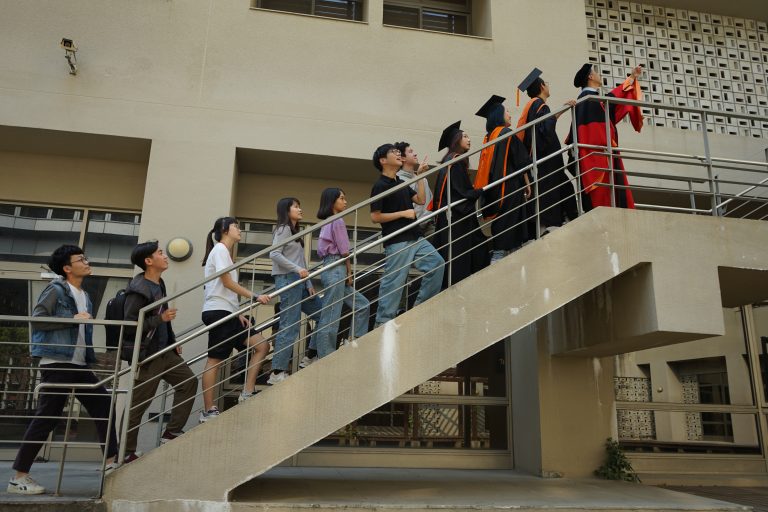
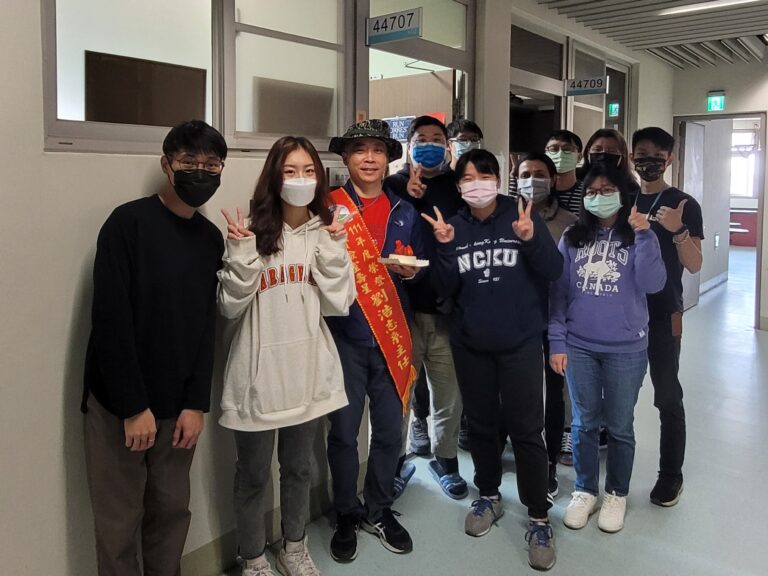

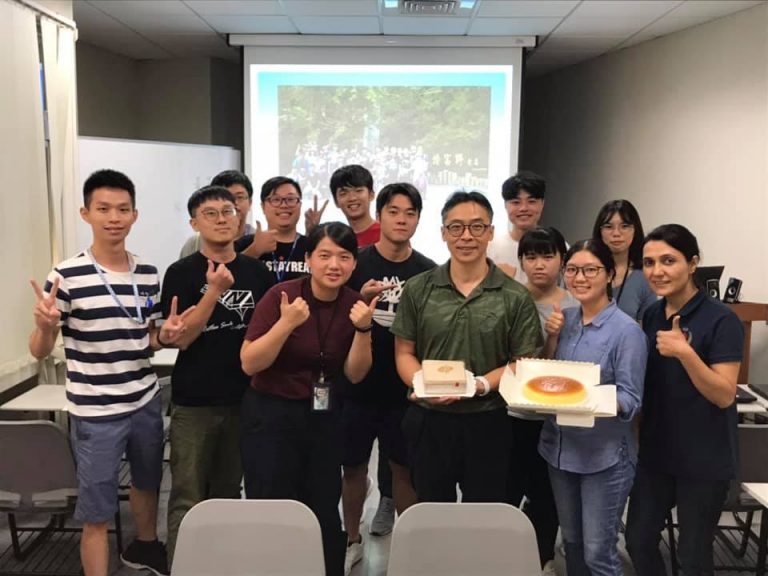

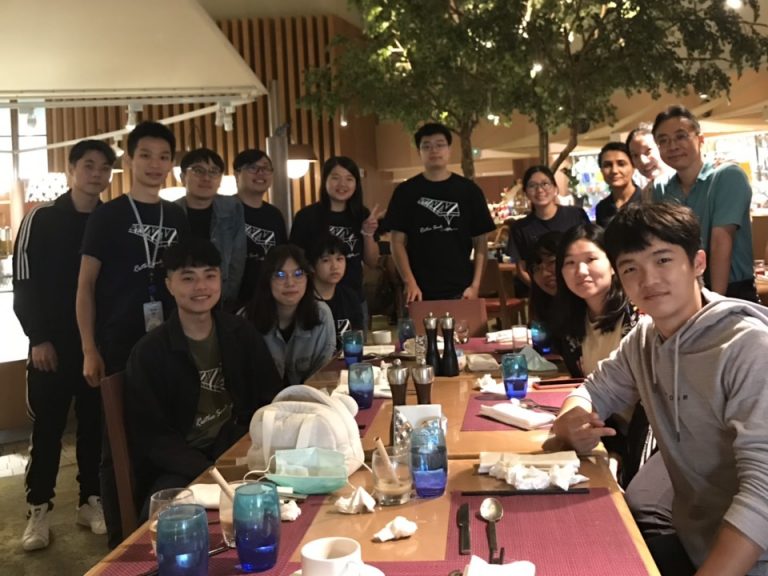
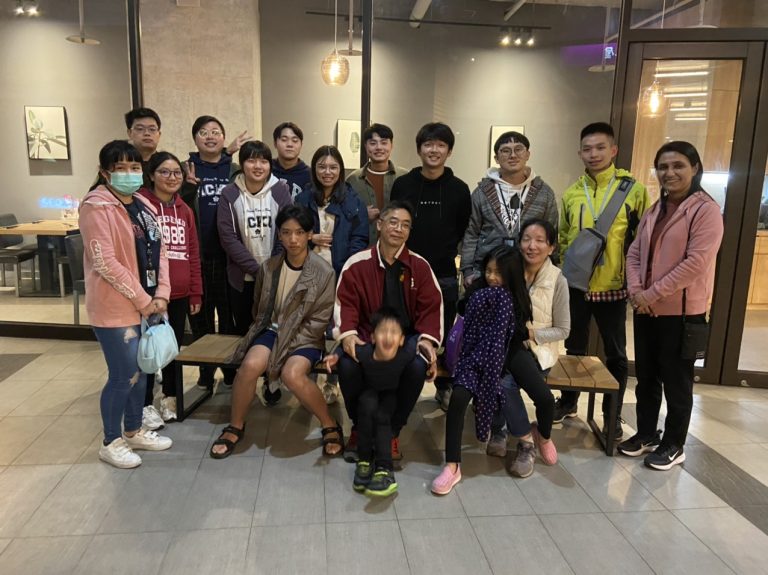
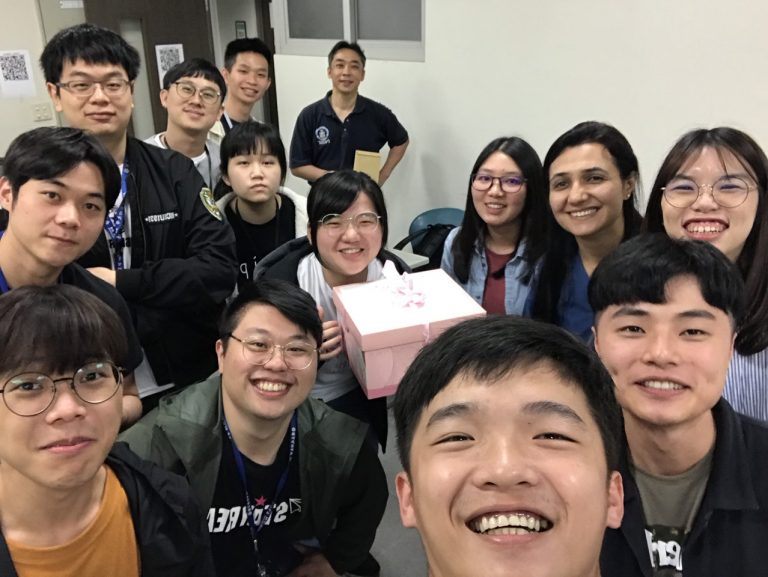
Professional
Performance
Honest
Be On Time
Knowledge and Skills
Positive Attitude
Pro-Active
Hands on
Enthusiastic
Team Work
Always Thinking
Always Prepared
Go the Extra Mile
LMNN 微奈米製造與分析實驗室分析介紹
Publications
Low-frequency conductivity of low wear high-entropy alloys
Nature Communicationsvolume 15, Article number: 4554 (2024)
Cheng-Hsien Yeh, Wen-Dung Hsu, Bernard Haochih Liu, Chan-Shan Yang, Chen-Yun Kuan, Yuan-Chun Chang, Kai-Sheng Huang, Song-Syun Jhang, Chia-Yen Lu, Peter K. Liaw & Chuan-Feng Shih
High-entropy alloys (HEAs) provide new research avenues for alloy combinations in the periodic table, opening numerous possibilities in novel-alloy applications. However, their electrical characteristics have been relatively underexplored. The challenge in establishing an HEA electrical conductivity model lies in the changes in electronic characteristics caused by lattice distortion and complexity of nanostructures. Here we show a low-frequency electrical conductivity model for the Nb-Mo-Ta-W HEA system. The cocktail effect is found to explain trends in electrical-conductivity changes in HEAs, while the magnitude of the reduction is understood by the calculated plasma frequency, free electron density, and measured relaxation time by terahertz spectroscopy. As a result, the refractory HEA Nb15Mo35Ta15W35 thin film exhibits both high hardness and excellent conductivity. This combination of Nb15Mo35Ta15W35 makes it suitable for applications in atomic force microscopy probe coating, significantly improving their wear resistance and atomic-scale image resolution.
https://www.nature.com/articles/s41467-024-49035-0
Resistive switching characteristics of methyl-ammonium lead iodide perovskite during atmosphere degradation
976(10), 2023. (SCI, IF 2022: 6.2, R: 8/78 = 10.26%, METALLURGY & METALLURGICAL ENGINEERING)
Seema Wafee , Ching-Chich Leu , Yu-Wen Chen , Bernard Haochih Liu
Methylammonium lead iodide (MAPbI3) with extraordinary optoelectronic properties has recently been explored for memristors. Despite significant studies on its susceptibility to air, there has been limited attention towards the impact of ambiance on resistive switching (RS), specifically, the nanoscale electrical properties of interest. We used scanning probe microscopy (SPM) to study local current-voltage (I-V) characteristics, time-scale evolution of hysteresis, current maps, and topography to profoundly understand the ambient degradation. The local and macroscopic current-voltage characteristics are studied by interface modulation with (3-Aminopropyl)trimethoxysilane (APTMS) in devices, i.e., ITO/APTMS/MAPbI3 and ITO/ MAPbI3/APTMS. We report three stages of degradation based on quantitative nano-mechanical (QNM) characterizations and local I-V properties: stage 1 comprising of increased Young’s modulus accompanied by the appearance of hysteresis; stage 2 with decreased Young’s modulus when RS and negative differential resistance (NDR) happen with the evolution of lead iodide (PbI2); stage 3 when RS disappears with enhanced Young’s modulus and densification of PbI2. The enhanced nanoscale and macroscale RS characteristics of ITO/MAPBI3 and ITO/APTMS/MAPbI3 could be attributed to the humidity-induced degradation of MAPbI3 into PbI2 indicated by XRD. These characteristics at the nanoscale however diminish on Day 7 showing the nano-scale RS devices requires the prompt attention of researchers.
https://www.sciencedirect.com/science/article/abs/pii/S0925838823025343
Detection of live SARS-CoV-2 virus and its variants by specially designed SERS-active substrates and spectroscopic analyses
Analytica Chimica Acta, Vol. accepted on March 26, 2023. (SCI, IF 2022: 6.2, R: 10/87 = 11.49%, CHEMISTRY, ANALYTICAL)
Jaya Sitjar, Jiunn-Der Liao*, Han Lee, Huey-Pin Tsai, Jen-Ren Wang, Chien-Hsiung Chen, Hao Wang, and Bernard Haochih Liu
Machine learning framework for determination of elastic modulus without contact model fitting
September 2022
International Journal of Solids and Structures
Lynn Nguyen Bernard Haochih Liu
Many contact models have been proposed for determining the elastic modulus of materials based on AFM force measurement. However, contact model fitting could be a challenging task since the elastic modulus usually varies depending on the tip parameters (i.e., radius and half-opening angle) which are difficult to determine in practice. Therefore, this study proposes a supervised machine learning (SML) regression framework for determining the elastic modulus without the need to either select an appropriate contact model or perform contact model fitting. In the proposed approach, the SML regressor learns the relationship between the force-displacement (FZ) features and the elastic modulus, and then predicts the elastic modulus of unseen samples directly from their FZ features. The predictive power of the proposed framework is demonstrated using both homogeneous materials (polydimethylsiloxane, polymethyl methacrylate, and polyvinyl alcohol), and heterogeneous materials (Staphylococcus aureus bacteria and methylammonium lead iodide). It is shown that the Gaussian process regression (GPR) model achieves a higher prediction accuracy than the multiple linear regression (MLR), random forest (RF), and support vector regression (SVR) models for both groups of materials. Particularly, GPR achieves a testing coefficient of determination value of up to 91.55% for homogeneous materials, and 82.73% for heterogeneous materials. Overall, the results confirm that the proposed SML regression framework is capable of determining the elastic modulus of both homogeneous and heterogeneous materials without the need for both contact model fitting and knowledge of tip shape.
https://www.sciencedirect.com/science/article/abs/pii/S0020768322004292?via%3Dihub
Emerging machine learning strategies for diminishing measurement uncertainty in SPM nanometrology
Surface Topography: Metrology and Properties, 10, 3, 033002, 2022. (SCI, IF 2022: 2.7, R: 29/63= 46.03%, INSTRUMENTS & INSTRUMENTATION)
Linh Thi Phuong Nguyen, Bernard Haochih Liu*
Scanning probe microscopy (SPM) is an outstanding nanometrology tool for characterizing the structural, electrical, thermal, and mechanical properties of materials at the nanoscale. However, many challenges remain in the use of SPM. Broadly speaking, these challenges are associated with the acquisition of the SPM data and the subsequent analysis of this data, respectively. Both problems are related to the inherent uncertainty of the data obtained in SPM-based measurements due to the nanoscale geometry of the SPM probe tip, the state of the sample imaging region, the data analysis methods themselves, and the experience of the users. Machine learning (ML) approaches have been increasingly applied to address these problems in recent years. In general, ML approaches involve constructing a well-organized and representative SPM dataset from experimental and theoretical trials, and then using the data features of this dataset for ML models to learn and produce appropriate predictions. Herein, this review examines the development of recent ML strategies for reducing measurement uncertainty in SPM-based measurements. The review commences by introducing the ML models and algorithms commonly used in SPM-related applications. Recent approaches for collecting and preprocessing the SPM data to extract significant data features for further ML processing are then introduced. A review of recent proposals for the applications of ML to the improvement of SPM instrumentation and the enhancement of data processing and overall understanding of the material phenomena is then presented. The review concludes by presenting brief perspectives on future opportunities and open challenges in the related research field.
https://iopscience.iop.org/article/10.1088/2051-672X/ac8a62
A multilevel nonvolatile visible light photomemory based on charge transfer in conformal zinc–tin oxide/Au nanoparticle heterostructures
Journal of Materials Chemistry C, 10, 8181, 2022. (SCI, IF 2022: 6.4, , R: 31/159 = 19.49%, PHYSICS, APPLIED)
Li-Chung Shih, Sheng-Rong Lin, Rajneesh Chaurasiya, Po-Yen Kung, Song-Syun Jhang, Bernard Haochih Liu, Yen-Hsun Su and Jen-Sue Chen
Machine learning approach for reducing uncertainty in AFM nanomechanical measurements through selection of appropriate contact model
July–August 2022
European Journal of Mechanics – A/Solids
Lynn Nguyen Bernard Haochih Liu
The force-displacement (FZ) curves obtained by atomic force microscopy (AFM) are one of the most commonly used methods for measuring the nanomechanical properties of engineering materials. However, the values of the elastic modulus obtained in this way inevitably contain a certain amount of uncertainty arising from the choice of contact model and the acquisition of the corresponding experimental parameters. Accordingly, this study proposes a supervised machine learning (SML) framework for selecting the appropriate contact model for evaluating the elastic modulus depending on the particular features of the FZ curve. In the proposed approach, the features of the FZ curve are extracted and supplied to the SML classifier, which learns these features and outputs the appropriate contact model accordingly.The classifier is implemented using five different classifiers and four different contact models. The SML classifiers are trained and tested using polyvinyl alcohol, polymethyl methacrylate, polydimethylsiloxane, and gold samples. The testing results show that the linear discriminant analysis (LDA) classifier provides the best contact model prediction quality for these materials. The practical feasibility of the proposed framework is demonstrated by processing the unseen FZ curves of Staphylococcus aureus bacteria. The LDA suggests the use of the modified Sneddon model with a testing accuracy of 96.8%. Overall, the results show that the proposed SML classifier provides a powerful tool for selecting the appropriate contact model and computing the corresponding elastic modulus with no prior knowledge required of the tip shape or any manual processing of the FZ curve.
https://www.sciencedirect.com/science/article/abs/pii/S0997753822000626
Synergistic surface-enhanced Raman scattering effect to distinguish live SARS-CoV-2 S pseudovirus
Analytica Chimica Acta, 1193, 339406, 2022. (SCI, IF 2022: 6.2, R: 8/86 = 9.3%, CHEMISTRY, ANALYTICAL)
Jaya Sitjar , Hong-Zheng Xu , Chih-Yun Liu , Jen-Ren Wang, Jiunn-Der Liao , Huey-Pin Tsai, Han Lee , Bernard Haochih Liu, Chia-Wei Chang.
Photodegradation pathways of CH3NH3PbI3 organic perovskite polycrystalline film observed by in-situ scanning probe microscopy.
Applied Surface Science, 545, 149081, 2021. (SCI, IF 2022: 6.7, R: 1/21= 4.76%, MATERIALS SCIENCE, COATINGS & FILMS) (SCI, IF 2021: 7.392, R: 1/20= 5.00%, MATERIALS SCIENCE, COATINGS & FILMS)
Wan-Ci Liao, Bernard Haochih Liu*, Ching-Chich Leu.
In this study, the in-situ observation of degradation-induced local elastic modulus (Young’s modulus) variation in CH3NH3PbI3 (MAPbI3) polycrystalline film was conducted using the continuous scanning by scanning probe microscopy (SPM). We pointed out that the observed degradation in MAPbI3 film under the SPM continuous scanning is a photo-excited process due to the stray laser effect induced by the scattering of the SPM-equipped red laser. The degradation rate was highly accelerated by light illumination when the MAPbI3 polycrystalline films were aged in humid air, O2, dry air, and N2 atmosphere. Significantly, the SPM analysis result shows that several hours is sufficient for MAPbI3 film to undergo red light degradation in N2. Otherwise, under light illumination, the result provides evidence that hydrate, which is the critical intermediate phase to trigger humid degradation, did not occur even in the presence of H2O. It identifies H2O is not the preferential species to react with the photo-excited MAPbI3. Though the laser effect must be carefully taken into account, this study indicates that SPM is an appropriate analysis technique to examine the infinitesimal variation of surface property in organic perovskite material, clarifying the degradation mechanism in the initial period.
https://www.sciencedirect.com/science/article/pii/S0169433221001574
Lewis bases: promising additives for enhanced performance of perovskite solar cells
Materials Today Energy, 22, 100847, 2021. (SCI, IF 2022: 9.3, R: 20/115 = 17.39%, ENERGY & FUELS) (SCI, IF 2021: 9.257, R: 21/119 = 17.64%, ENERGY & FUELS)
Seema Wafee, Bernard Haochih Liu*, Ching-Chich Leu*
Lead halide perovskite is considered to be a very attractive photovoltaic material in the last few decades because of its rapid increase in efficiency. However, its instability under different environmental conditions and issues with its toxicity remain challenges. The approach of using multifunctional additives to increase the grain size, passivate both positively and negatively charged defects to enhance the long-term stability of perovskite has remained popular among the photovoltaic community. In this regard, a huge number of articles have been published in recent years focusing on additive engineering of perovskite. Here, we present a review on Lewis base additives in the precursor solution, anti-solvent, and interface treatment in perovskite to improve its photovoltaic properties. The grain boundaries are susceptible to decomposition because they have been found to carry the defects. To analyze the role of Lewis bases in increasing the grain size to minimize the grain boundary density in polycrystalline films for overall stability enhancement of perovskite, we detail the chelate effect and synergistic effect of additives in perovskite for solar cells. Finally, a future outlook is presented to discuss the critical challenges.
https://www.sciencedirect.com/science/article/pii/S2468606921002124
Nanoscale mapping of humid degradation-induced local mechanical property variation in CH3NH3PbI3 polycrystalline film by scanning probe microscopy
Applied Surface Science, 507, 145078, 2020. (SCI, IF 2022: 6.7, R: 1/21 = 4.8%, MATERIALS SCIENCE, COATINGS & FILMS) (SCI, IF 2020: 6.707, R: 1/21 = 4.8%, MATERIALS SCIENCE, COATINGS & FILMS)
Wan-Ci Liao , Bernard Haochih Liu* , Ching-Chich Leu*
We reported on the humid degradation-induced local elastic modulus (Young’s modulus) variation in CH3NH3PbI3 (MAPbI3) polycrystalline film investigated by scanning probe microscopy (SPM) in humid ambient. The SPM equipped with PeakForce Quantitative Nanomechanical Measurement (PeakForce QNM) has ability to probe the near-surface elastic modulus on the specific position of material, examining the correlation between the local mechanical property and the microstructure of film through the nanoscale mapping of elastic modulus. Based on the observed variation of elastic modulus of film with aging time, we proposed a four stage degradation process, due to the development of MAPbI3·H2O and PbI2 phases, occurred on the MAPbI3 film when it aged in ambient. Evidently, the grain boundary plays a critical role for degradation process in a polycrystalline film, leading to a distinct result to that in the MAPbI3 single crystal. When the MAPbI3·H2O developed at the grain boundary, it perturbed from surface to form the low modulus humps. Our study result also suggested that grain boundary is the last region of film surface to form PbI2 under a humid ambient. These analyses provided key insights into the microstructural effects on the degradation process of a MAPbI3 polycrystalline film.
https://www.sciencedirect.com/science/article/pii/S0169433219338954
Role of phase transformation in possible wear mechanisms in silicon microelectromechanical-system devices
Materials Chemistry and Physics, 245, 122765, 2020. (SCI, IF 2022: 4.6, R: 127/342 = 37.13%, MATERIALS SCIENCE, MULTIDISCIPLINARY) (SCI, IF 2020: 4.094, R: 126/334 = 37.72%, MATERIALS SCIENCE, MULTIDISCIPLINARY)
Fan-Wei Liu , Jennifer Kung, Jui-Chao Kuo, Bernard Haochih Liu* , Yu-Lun Chueh.
Wear on microelectromechanical-system (MEMS)/nanoelectromechanical-system (NEMS) devices is an inevitable and critical issue. It reduces the lifespan of the device and increases the failure rate. In this study, an atomic force microscope (AFM) was used to investigate wear mechanisms and to devise precautions against wear. AFM made it possible to demonstrate the operational behaviors of MEMS/NEMS silicon-based devices. It was found that the dynamic tip–sample interaction process induces phase transformation of the silicon tip apart from the conventional wear mechanisms. This weakens the mechanical strength of the tip and promotes wear. Evidence of phase transformation in probe tips during scanning was found, and the possibility of the phase-transformation path was also investigated. In addition, the distribution of stress in AFM probe tips with applied force was simulated. Worn probe tips were analyzed based on the Kikuchi patterns, and then high pressure was applied on monocrystalline silicon to determine the possible phase-transformation path. The results provided useful insights into wear mechanisms in silicon-based MEMS devices.
https://www.sciencedirect.com/science/article/pii/S0254058420301449
Dielectric Nanoparticles Coated upon Silver Hollow Nanosphere as an Integrated Design to Reinforce SERS Detection of Trace Ampicillin in Milk Solution.
Coatings, 10, 390, 2020. (SCI, IF 2022: 3.4, R: 56/159 =35.22%, PHYSICS, APPLIED) (SCI, IF 2020: 2.881, R: 70/160 =43.75%, PHYSICS, APPLIED)
Han Lee , Jia-Wei Yang , Jiunn-Der Liao*, Jaya Sitjar, Bernard Haochih Liu, Kundan Sivashanmugan, Wei-En Fu , and Guo Dung Chen.
https://www.researchgate.net/publication/340710288_Dielectric_Nanoparticles_Coated_upon_Silver_Hollow_Nanosphere_as_an_Integrated_Design_to_Reinforce_SERS_Detection_of_Trace_Ampicillin_in_Milk_Solution
In-Situ Investigation on Nanoscopic Biomechanics of Streptococcus mutans at Low pH Citric Acid Environments Using an AFM Fluid Cell
International Journal of Molecular Sciences, 21, 24, 9481, 2020. (SCI, IF 2022: 5.6, R: 66/285 = 23.15%, BIOCHEMISTRY & MOLECULAR BIOLOGY) (SCI, IF 2020: 5.924, R: 67/295 = 22.71%, BIOCHEMISTRY & MOLECULAR BIOLOGY)
Linh Thi Phuong Nguyen and Bernard Haochih Liu*
https://www.ncbi.nlm.nih.gov/pmc/articles/PMC7764216/
SERS-Active Substrate with Collective Amplification Design for Trace Analysis of Pesticides
Nanomaterials, 9, 664, 2019. (SCI, IF 2022: 5.3 R: 109/342= 31.87%, MATERIALS SCIENCE, MULTIDISCIPLINARY) (SCI, IF 2019: 4.324, R: 89/314= 28.34%, MATERIALS SCIENCE, MULTIDISCIPLINARY)
Jaya Sitjar , Jiunn-Der Liao , Han Lee , Bernard Haochih Liu , Wei-en Fu
https://www.ncbi.nlm.nih.gov/pmc/articles/PMC6566408/
Micro-colonization of arsenic-resistant Staphylococcus sp. As-3 on arsenopyrite (FeAsS) drives arsenic mobilization under anoxic sub-surface mimicking conditions.
Science of The Total Environment, 669(15), 529-539, 2019. (SCI, IF 2022: 9.8, R: 26/274 = 9.48 %, ENVIRONMENT SCIENCES) (SCI, IF 2019: 6.551, R: 22/265 = 8.3 %, ENVIRONMENT SCIENCES)
Jagat Rathod, Jiin-Shuh Jean* , Wei-Teh Jiang, I-Hsiu Huang, Bernard Haochih Liu, Yao-Chang Lee.
https://pubmed.ncbi.nlm.nih.gov/30884274/
Fabrication of composite probe electrode used for localized impedance analysis of solid-state electrolyte LATP.
Solid State Ionics, 336, 11-18, 2019. (SCI, IF 2022: 3.2, R: 30/66 = 45.45%, PHYSICS, CONDENSED MATTER) (SCI, IF 2019: 4.324, R: 89/314= 28.34%, MATERIALS SCIENCE, MULTIDISCIPLINARY)
Yi-Hung Liu, Kuan-Ting Chen , Bernard Haochih Liu*
https://www.sciencedirect.com/science/article/pii/S0167273818309329
Ag nanostructures with spikes on adhesive tape as a flexible SERS-active substrate for in situ trace detection of pesticides on fruit skin.
Nanomaterials, 9(12), 1750, 2019. (SCI, IF 2022: 5.3, R: 38/159 = 23.9%, MATERIALS SCIENCE, MULTIDISCIPLINARY) (SCI, IF: 4.324, R: 89/314 = 28.3%, MATERIALS SCIENCE, MULTIDISCIPLINARY)
Jaya Sitjar, Jiunn-Der Liao, Han Lee ,Li Peng Pan , Bernard Haochih Liu, Wei-en Fu, Guo Dung Chen
https://www.mdpi.com/2079-4991/9/12/1750
Identification of characteristic macromolecules of Escherichia coli genotypes by atomic force microscope nanoscale mechanical mapping
Nanoscale Research Letters, 13: 35, 2018. (SCI, IF 2021: 5.418, R: 38/161 = 23.6 %, PHYSICS, APPLIED) (SCI, IF 2018: 3.159, R: 41/148 = 27.7 %, PHYSICS, APPLIED)
Alice Chinghsuan Chang , Bernard Haochih Liu*
https://pubmed.ncbi.nlm.nih.gov/29396772/
Screw extrusion-based additive manufacturing of PEEK.
Materials & Design, 140, 209-221, 2018. (SCI, IF 2022: 8.4, R: 65/342 = 19.00%, MATERIALS SCIENCE, MULTIDISCIPLINARY) (SCI, IF 2018: 5.77, R: 50/293 = 17.06%, MATERIALS SCIENCE, MULTIDISCIPLINARY)
Jian-Wei Tseng, Chao-Yuan Liu, Yi-Kuang Yen, Johannes Belkner, Tobias Bremicker, Bernard Haochih Liu Ta-Ju Sun, An-Bang Wang*
Polyether-ether-ketone (PEEK) has high mechanical strength, thermal performance, and biocompatibility, and is widely used in biomedical and chemical engineering applications. However, to date there are no guidelines for the building of a 3D printer for highly viscous materials, e.g., PEEK. In this paper, a screw extrusion method was developed to overcome the existing problems of the filament-feeding method. Excellent flow stability (< 3% variation) and high printing speed (up to 370 mm/s) for PEEK printing were achieved. Highly reproducible mechanical tests of the printing products were demonstrated with 96% of the bulk material strength for the first time. Furthermore, an exchangeable printing head was built to cover both line- and plane-printing needs to widen its applications and improve printing surface quality (up to 0.945 nm in Ra). All printed material had a more brittle character in comparison with the bulk material and the post annealing process was found to have no significant effect on the mechanical strength. Additionally, porous artificial intervertebral cages with controllable size and distribution were manufactured to demonstrate potential applications.
https://www.sciencedirect.com/science/article/pii/S0264127517310638
Development of manganese-based thin-film probe via hydrothermal process for localized electrochemical impedance analysis of a solid-state electrolyte LiPON
Materials Letters, 216, 295-298, 2018. (SCI, IF 2022: 3.0, R: 68/159 = 42.76%, PHYSICS, APPLIED) (SCI, IF 2018: 3.019, R: 44/148 = 29.72%, PHYSICS, APPLIED)
Yi-Hung Liu, Sin-Syu Liao, Bernard Haochih Liu*
https://www.sciencedirect.com/science/article/pii/S0167577X18301320
Modified flat-punch model for hyperelastic polymeric and biological materials in nanoindentation.
Mechanics of Materials, 118, 17-21, 2018. (SCI, IF 2022: 5.3, R: 38/159= 23.90%, MECHANICS) (SCI, IF 2018: 2.958, R: 24/134 = 17.91%, MECHANICS)
Alice Chinghsuan Chang , Bernard Haochih Liu*
Nanoindentation can characterize in-situ elastic modulus E of an object by pressing an indenter into the sample surface and fitting the detected data to a contact equation. In this work, we found the conventional contact-mechanism theory resulted in a high uncertainty of E for the hyperelastic materials, including some polymers and biological cells. The evaluated E displayed an exponential decrease with increasing indent distance when fitting to Hertz model and caused high E variance as a function of indent depth. To obtain a reliable E of those specimens, a new equation for E computation directly adopting the mechanical behavior of the sample was proposed. Indenting on hyperelastic polydimethylsiloxane (PDMS), we observed linear force-displacement curves and used its power-law for the selection of the correct equation. The flat-punch model was thus chosen and showed constant E independent of the indent size, which meant the indent depth in this paper. After eliminating the depth effect on E, we referred the nanoindentation results to the bulk E of PDMS for the revision of the flat-punch model. A new equation was generated and displayed the improvement on not only the precision (remove depth effect) but also the accuracy (compare to compression test) of E for PDMS. The suitability of the modified flat-punch model for hyperelastic material implied the practical deformational mechanism different from the general idea. Applied on microbial samples, our new equation characterized two bacteria and showed consistent results with their membrane structures. In conclusion, we suggest the modified flat-punch model improves the description of mechanical behaviors and derived the correct E for hyperelastic materials.
https://www.sciencedirect.com/science/article/pii/S0167663617302776
Gold nanoparticle-coated ZrO2-nanofibers surface as a SERS-active substrate for trace detection of pesticides residue
Nanomaterials, 8, 6, 402 (11), 2018. (SCI, IF 2022: 5.3, R: 38/159 = 23.9%, MATERIALS SCIENCE, MULTIDISCIPLINARY) (SCI, IF 2018: 4.034, R: 71/293 = 24.23%, MATERIALS SCIENCE, MULTIDISCIPLINARY)
*Han Lee, Jiunn-Der Liao*, Kundan Sivashanmugan, Bernard Haochih Liu, Wei-en Fu, Chih-Chien Chen, Guo Dung Chen, and Yung-Der Juang.
https://www.ncbi.nlm.nih.gov/pmc/articles/PMC6027227/
Solution-processed dual-layer Pt-SiO2 core-shell nanoparticles for nanocrystal memory with multi-bit storage states.
Journal of Alloys and Compounds, 749, 369-377, 2018. (SCI, IF 2022: 6.2, R: 8/78 = 10.26%, METALLURGY & METALLURGICAL ENGINEERING) (SCI, IF 2018: 4.175, R: 6/76 = 7.89%, METALLURGY & METALLURGICAL ENGINEERING)
Hunag-Di Lin, Sheng-Fu Huang, Bernard Haochih Liu , Fu-Ken Liu, Ching-Chich Leu*
https://www.sciencedirect.com/science/article/pii/S0925838818311605
Extending the limits of Pt/C catalysts with passivation-gas- incorporated atomic layer deposition.
Nature Catalysis (1), 624–630, 2018. (SCI, IF 2022: 37.8, R: 3/161 = 1.86 %, CHEMISTRY, PHYSICAL)
Shicheng Xu, Yongmin Kim, Joonsuk Park, Drew Higgins, Shih-Jia Shen, Peter Schindler, Dickson Thian, J. Provine, Jan Torgersen, Tanja Graf, Thomas D. Schladt, Marat Orazov, Bernard Haochih Liu, Thomas F. Jaramillo, Fritz B. Prinz.
Controlling the morphology of noble metal nanoparticles during surface depositions is strongly influenced by precursor–substrate and precursor–deposit interactions. Depositions can be improved through a variety of means, including tailoring the surface energy of a substrate to improve precursor wettability, or by modifying the surface energy of the deposits themselves. Here, we show that carbon monoxide can be used as a passivation gas during atomic layer deposition to modify the surface energy of already deposited Pt nanoparticles to assist direct deposition onto a carbon catalyst support. The passivation process promotes two-dimensional growth leading to Pt nanoparticles with suppressed thicknesses and a more than 40% improvement in Pt surface-to-volume ratio. This approach to synthesizing nanoparticulate Pt/C catalysts achieved high Pt mass activities for the oxygen reduction reaction, along with excellent stability likely facilitated by strong catalyst–support interactions afforded by this synthetic technique.
https://www.researchgate.net/publication/326692124_Extending_the_limits_of_PtC_catalysts_with_passivation-gas-incorporated_atomic_layer_deposition
Strontium Oxide Deposited onto a Load-Bearable and Porous Titanium Matrix as Dynamic and High-Surface-Contact-Area Catalysis for Transesterification
Nanomaterials, 8(12), 973, 2018. (SCI, IF 2022: 5.3, R: 38/159 = 23.9%, MATERIALS SCIENCE, MULTIDISCIPLINARY) (SCI, IF 2018: 4.034, R: 71/293 = 24.23%, MATERIALS SCIENCE, MULTIDISCIPLINARY)
Han Lee , Jiunn-Der Liao*, Mu Hsuan Lee, Bernard Haochih Liu , Wei-en Fu, Kundan Sivashanmugan, Yung-Der Juang.
https://www.researchgate.net/publication/329211324_Strontium_Oxide_Deposited_onto_a_Load-Bearable_and_Porous_Titanium_Matrix_as_Dynamic_and_High-Surface-Contact-Area_Catalysis_for_Transesterification
In-situ, time-lapse study of extracellular polymeric substance discharge in Streptococcus mutans biofilm.
Colloids and Surface B: Biointerfaces, 150, 98-105, 2017. (SCI, IF 2022: 5.8, R: 9/70 = 12.86%, BIOPHYSICS) (SCI, IF 2017: 3.997, R: 13/72 = 18.06%, BIOPHYSICS)
Bernard Haochih Liu*, and Li-Chieh Yu
Streptococcus mutans is one of the main pathogens that cause tooth decay. By metabolizing carbohydrates, S. mutans emits extracellular polymeric substance (EPS) that adheres to the tooth surface and forms layers of biofilm. Periodontal disease occurs due to the low pH environment created by S. mutans biofilm, and such an acidic environment gradually erodes tooth enamel. Since the existence of EPS is essential in the formation of biofilm, the in–situ investigation of its generation and distribution in real time is the key to the control and suppression of S. mutans biofilm.
Prior studies of the biofilm formation process by fluorescence microscope, scanning electron microscope, or spectroscope have roughly divided the mechanism into three stages: (1) initial attachment; (2) microcolonies; and (3) maturation. However, these analytical methods are incapable to observe real-time changes in different locations of the extracellular matrix, and to analyze mechanical properties for single bacteria in micro and nanoscale. Since atomic force microscopy (AFM) operates by precise control of tip-sample interaction forces in liquid and in air, living microorganisms can be analyzed under near-physiological conditions. Thus, analytical techniques based on AFM constitute powerful tools for the study of biological samples, both qualitatively and quantitatively.
In this study, we used AFM to quantitatively track the changes of multiple nanomechanical properties of S. mutans, including dissipation energy, adhesion force, deformation, and elastic modulus at different metabolic stages. The data revealed that the bacterial extracellular matrix has a gradient distribution in stickiness, in which different stickiness indicates the variation of EPS compositions, freshness, and metabolic stages. In-situ, time-lapse AFM images showed the local generation and distribution of EPS at different times, in which the highest adhesion distributed along sides of the S. mutans cells. Through time-lapse analysis, we concluded that each contour layer is associated with a dynamic process of cell growth and nutrient consumption, and S. mutans is capable of controlling the priority of EPS secretion at specific locations. The live bacteria exhibited cyclic metabolic activities in the period of 23–34 min at the maturation stage of biofilm formation. In addition, the discharge of EPS is responsive to the shear stress caused by the topographical change of biofilm to provide stronger mechanical support in the formation of 3D networked biofilm.
https://www.sciencedirect.com/science/article/pii/S0927776516308256
Structure-dependent behaviours of skin layers studied by atomic force microscopy.
Journal of Microscopy, 267(3), 265-271, 2017. (SCI, IF 2022: 2.0, R: 6/8 = 75%, MICROSCOPY) (SCI, IF 2017: 1.693, R: 5/10 = 50%, MICROSCOPY)
Alice Chinghsuan Chang, Bernard Haochih Liu* , Pei-Lin Shao , Jiunn-Der Liao
https://pubmed.ncbi.nlm.nih.gov/28333371/
Development of all-solution-processed nanocrystal memory
Journal of Alloys and Compounds, 698, 484-494, 2017. (SCI, IF 2022: 6.2, R: 8/78 = 10.25%, METALLURGY & METALLURGICAL ENGINEERING) (SCI, IF 2017: 3.779, R: 4/75 = 5.33%, METALLURGY & METALLURGICAL ENGINEERING)
Sheng-Fu Huang , Hunag-Di Lin , Bernard Haochih Liu, Fu-Ken Liu , Ching-Chich Leu*. Development of all-solution-processed nanocrystal memory.
https://www.sciencedirect.com/science/article/pii/S0925838816341718
Ageing, Shocks and Wear Mechanisms in ZTA and the Long-Term Performance of Hip Joint Materials.
Materials, 10, 6, 569(P1-15), 2017. (SCI, IF 2022: 3.4, R: 20/78 = 25.64%, MATERIALS SCIENCE, MULTIDISCIPLINARY) (SCI, IF 2017: 2.467, R: 111/285 = 38.95%, MATERIALS SCIENCE, MULTIDISCIPLINARY)
Armelle Perrichon , Bernard Haochih Liu, Jérôme Chevalier, Laurent Gremillard, Bruno Reynard, Frédéric Farizon, Jiunn-Der Liao, Jean Geringer*
https://www.mdpi.com/1996-1944/10/6/569
Nanoplasmonic Au/Ag/Au nanorod arrays as SERS-active substrate for the detection of pesticides residue.
Journal of the Taiwan Institute of Chemical Engineers, 75, 287-291, 2017. (SCI, IF 2022: 5.7, R: 25/140 = 17.86%, ENGINEERING, CHEMICAL) (SCI, IF 2017: 3.849, R: 24/137 = 17.52%, ENGINEERING, CHEMICAL)
Kundan Sivashanmugan, H Lee , CH Syu, Bernard Haochih Liu, Jiunn-Der Liao*
https://www.sciencedirect.com/science/article/pii/S1876107017301256
Hydrothermal fabrication of highly porous titanium bio-scaffold with a load-bearable property
Materials, 10(7), 726, 2017. (SCI, IF 2022: 3.4, R: 20/78 = 25.64%, MATERIALS SCIENCE, MULTIDISCIPLINARY) (SCI, IF 2017: 2.467, R: 111/285 = 38.95%, MATERIALS SCIENCE, MULTIDISCIPLINARY)
Han Lee, Jiunn-Der Liao* , Kundan Sivashanmugan, Bernard Haochih Liu, Yu-Han Su, Chih-Kai Yao, Yung-Der Juang
https://www.mdpi.com/1996-1944/10/7/726
Continuous waste cooking oil transesterification accelerated by microwave-heating and adding strontium oxide as the catalyst.
Continuous waste cooking oil transesterification accelerated by microwave-heating and adding strontium oxide as the catalyst.
H Lee, Jiunn-Der Liao*, Jung-Wei Yang, Wen-Dung Hsu, Bernard Haochih Liu, Teng-Chien Chen, Kundan Sivashanmugan, Aharon Gedanken.
https://www.researchgate.net/publication/319860775_Continuous_waste_cooking_oil_transesterification_accelerated_by_microwave_heating_and_adding_strontium_oxide_as_the_catalyst
Dual properties of zirconia coated porous titanium for a stiffness enhanced bio-scaffold.
Materials & Design, 132, 13-21, 2017. (SCI, IF 2022: 8.4, R: 65/342 = 19.01%, MATERIALS SCIENCE, MULTIDISCIPLINARY) (SCI, IF 2017: 4.525, R: 53/285 = 18.60%, MATERIALS SCIENCE, MULTIDISCIPLINARY)
H Lee, Jiunn-Der Liao* , Kundan Sivashanmugan, Bernard Haochih Liu, Si-LingWeng, Yung-Der Juang , Chih-Kai Yao
https://www.sciencedirect.com/science/article/pii/S0264127517306421g
Practical assessment of nanoscale indentation techniques for the biomechanical properties of biological materials.
Mechanics of Materials, 98, 11-21, 2016. (SCI, IF 2022: 3.9, R: 32/137 = 23.36%, MECHANICS) (SCI, IF 2016: 2.651, R: 22/133 = 16.54%, MECHANICS)
Alice Chinghsuan Chang, Jiunn-Der Liao , Bernard Haochih Liu*
Nanoindentation on biological materials reveals the surface response to an external load. The load– or force–displacement information, as obtained by Z-axis sensitive nanoindenter or an atomic force microscope, is usually converted into general relations of elastic modulus and hardness, which are thereafter associated with the indented surface properties of biological materials. In spite of the growing popularity of nanoindentation in the field of biological research, the measured deviations caused by the factors, such as the experimental variables and the intrinsic surface characteristics of samples, have not been well studied. This review thus examines the issue of nano-mechanical measurements, and particularly how these are influenced by the probe geometry, penetration depth, and contact mechanism model used, as well as the appropriate use of the related instruments. We propose a guideline for experimental settings of various biological specimens, and provide suggestions for future area of applications.
https://www.sciencedirect.com/science/article/pii/S0167663616300163
Probed adhesion force of living lung cells with a tip-modified atomic force microscope.
Biointerphases, 11(4), 04B311, 2016. (SCI, IF 2022: 2.1, R: 50/70 = 71.43%, BIOPHYSICS) (SCI, IF 2016: 2.603, R: 33/73 = 45.21%, BIOPHYSICS)
Wei-En Fu , Kundan Sivashanmugan , Jiunn-Der Liao*, Ying-Yi Lin, Kai-Hung Cheng , Bernard Haochih Liu , Jun-Jer Yan, Ming-Hong Yeh
https://pubmed.ncbi.nlm.nih.gov/27998155/
Nanoscale electrochemical characterization of a solid-state electrolyte using a manganese-based thin-film probe.
Nanoscale, 8 (48), 19978-19983, 2016. (SCI, IF 2022: 6.7, R: 27/159 = 16.98%, PHYSICS, APPLIED) (SCI, IF 2016: 7.367, R: 13/148 = 8.78%, PHYSICS, APPLIED)
Yi-Hung Liu, Sin-Syu Liao , Bernard Haochih Liu*
A Li–Mn–O thin-film electrode probe has been developed via a facile synthesis process, which enables nanoscale electrochemical investigation of the solid-state electrolyte LiPON. Detailed information of ion transport can be obtained by the thin-film probe, rather than the macroscale electrochemical impedance analysis. It is clarified from the nanoscale analysis that the charge transfer resistance at the Li–Mn–O/LiPON interface dominates the localized impedance, while it can be significantly reduced rather than the electrolyte resistance by applying a DC bias.
https://pubs.rsc.org/en/content/articlelanding/2016/nr/c6nr07733a
Focused-ion-beam-fabricated homogeneous acute-angled Au nanorods for surface enhanced Raman scattering.
Applied Physics Express, 8, 052402, 2015. (SCI, IF 2022: 2.3, R: 92/159 = 57.86%, PHYSICS, APPLIED) (SCI, IF 2015: 2.265, R: 41/145 = 28.28%, PHYSICS, APPLIED)
Kundan Sivashanmugan , Jiunn-Der Liao* , Bernard Haochih Liu
https://iopscience.iop.org/article/10.7567/APEX.8.052402
Intense Raman scattering on hybrid Au/Ag nanoplatforms for the distinction of MMP-9-Digested type-I collagen fiber detection.
Biosensors and Bioelectronics, 72, 61-67, 2015. (SCI, IF 2022: 12.6, R: 2/70 = 2.86%, BIOPHYSICS) (SCI, IF 2015: 7.476, R: 6/72 = 8.33%, BIOPHYSICS)
*Kundan Sivashanmugan, Jiunn-Der Liao* , Pei-Lin Shao , Bernard Haochih Liu , Te-Yu Tseng , Chih-Yu Chang
https://www.sciencedirect.com/science/article/pii/S0956566315300944
Oriented association of multiwall carbon nanotubes upon efficient epitaxial organization of polyfluorene.
Carbon, 93, 342-352, 2015. (SCI, IF 2022: 10.9, R: 39/342 = 11.40%, MATERIALS SCIENCE, MULTIDISCIPLINARY) (SCI, IF 2015: 6.198, R: 27/271 = 9.96%, MATERIALS SCIENCE, MULTIDISCIPLINARY)
Chih-Hui Lo , Min-TaTsai, Bernard Haochih Liu, Seiji Isoda , and Jrjeng Ruan*
https://www.sciencedirect.com/science/article/pii/S0008622315004510
Ag nanoclusters on ZnO nanodome array as hybrid SERS-active substrate for trace detection of malachite green.
Sensors and Actuators: B, 207, 430-436, 2014. (SCI, IF 2022: 8.4, R: 1/63 = 1.59%, INSTRUMENTS AND INSTRUMENTATION) (SCI, IF 2014: 4.097, R: 3/56 = 5.36%, INSTRUMENTS AND INSTRUMENTATION)
Kundan Sivashanmugan, Jiunn-Der Liao*, Bernard Haochih Liu , Chih-Kai Yao, and Shyh-ChyangLuo
https://www.sciencedirect.com/science/article/pii/S0925400514013008
Shape effect of torsional resonance mode AFM cantilevers operated in fluids.
Surface Topography: Metrology and Properties, 2, 035003, 2014. (SCI, IF 2022: 2.7, R: 29/63 = 46.03%, INSTRUMENTS & INSTRUMENTATION)
Bernard Haochih Liu* , Sheng-Kai Chuang , Allison Lowai Huang
https://iopscience.iop.org/article/10.1088/2051-672X/2/3/035003
Effects of Annealing on Magnetic Properties of Electrical Steel and Performances of SRM After Punching.
IEEE TRANSACTIONS ON MAGNETICS, 50(11), 1-4, (SCI, IF 2022: 2.1, R: 179/275 = 65.09%, ENGINEERING, ELECTRICAL & ELECTRONICS) (SCI, IF 2014: 1.386, R: 110/249 = 44.18%, ENGINEERING, ELECTRICAL & ELECTRONICS)
Chao-Chien Chiang, Andrew M. Knight , Min-Fu Hsieh , Mu-Gong Tsai , Bernard Haochih Liu, In-Gann Chen, Zwe-Lee Gaing, Mi-Ching Tsai
https://www.researchgate.net/publication/273394280_Effects_of_Annealing_on_Magnetic_Properties_of_Electrical_Steel_and_Performances_of_SRM_After_Punching
AuGa2 on focused Ga ion beam-fabricated Au nanorod array for trace detection of melamine-cyanurate in milk solution.
Applied Physics Express, 8 (1), 017001, 2014. (SCI, IF 2022: 2.3, R: 92/159 = 57.86%, PHYSICS, APPLIED) (SCI, IF 2014: 2.365, R: 36/144 = 25.00%, PHYSICS, APPLIED)
Kundan Sivashanmugan , Jiunn-Der Liao* , Bernard Haochih Liu , Li-Chieh Yu
https://iopscience.iop.org/article/10.7567/APEX.8.017001
Ion-beam-sputter deposited titanium nitride thin films for conductive atomic force microscope probes.
Thin Solid Films, 529(1), 317-321, 2013. (SCI, IF 2022: 2.1, R: 98/159 = 61.64%, PHYSICS, APPLIED) (SCI, IF 2013: 1.867, R: 47/136 = 34.56%, PHYSICS, APPLIED)
Po-Jui Su, Bernard Haochih Liu*
https://www.sciencedirect.com/science/article/pii/S0040609012009157
Linking microstructure evolution and impedance behaviors in spark plasma sintered Si3N4/TiC and Si3N4/TiN ceramic nanocomposites.
Ceramics International, 39(4), 4205-4212, 2013. (SCI, IF 2022: 5.2, R: 3/28 = 10.71%, MATERIALS SCIENCE, CERAMICS) (SCI, IF 2013: 2.086, R: 3/25 = 12.00%, MATERIALS SCIENCE, CERAMICS)
Bernard Haochih Liu* , Po-Jui Su, Ching-Huan Lee, and Jow-Lay Huang
https://www.sciencedirect.com/science/article/pii/S0272884212012400
Probing the conductance and microstructure heterogeneity of Si3N4/TiC-based nanocomposite at the nanoscale by scanning impedance microscopy.
Journal of the American Ceramic Society, 96(7), 2311-2315, 2013. (SCI, IF 2022: 3.9, R: 4/28 = 14.29%, MATERIALS SCIENCES, CERAMICS) (SCI, IF 2013: 2.428, R: 1/25 = 4.00%, MATERIALS SCIENCES, CERAMICS)
Alex C. Lee , Po-Jui Su , Bernard Haochih Liu*
This study presents the results of atomic force microscopy (AFM)-localized impedance measurements within Si3N4/glassy phase/TiC heterogeneous nanostructures. The three phases show significant differences in the charge-transfer resistance and interface capacitance values detected on the plasma-etching surface by an ultrasharp AFM, and these characteristics are helpful to understand the sintering behavior in spark plasma sintering. The effect of an electrical field may induce localized Joule heating on conductive nano-TiC embedded in the Si3N4-based matrix. The glassy phase doped with Ti and C, as observed by transmission electron microscopy, may promote electrowetting, leading to enhanced densification in the insulating/conductive ceramic nanocomposite system.
https://ceramics.onlinelibrary.wiley.com/doi/full/10.1111/jace.12282
In situ biosensing of nanomechanical property and electrochemical spectroscopy of Streptococcus mutans-containing biofilm.
Journal of Physics D: Applied Physics, 46, 275401, 2013. (SCI, IF 2022: 3.4, R: 56/159 = 35.22%, PHYSICS, APPLIED) (SCI, IF 2013: 2.521, R: 30/136 = 22.06%, PHYSICS, APPLIED)
Bernard Haochih Liu* , Kun-Lin Li , Kai-Li Kang , Wen-Ke Huang , Jiunn-Der Liao
https://iopscience.iop.org/article/10.1088/0022-3727/46/27/275401
Design, fabrication, and characterization of electroless Ni-P alloy films for micro heating devices.
Thin Solid Films, 537 (30) 263-268, 2013. (SCI, IF 2022: 2.1, R: 98/159 = 61.64%, PHYSICS, APPLIED) (SCI, IF 2013: 1.867, R: 47/136 = 34.56%, PHYSICS, APPLIED)
Bernard Haochih Liu* , Fang-Yi Liao , Jian-Hong Chen
https://www.sciencedirect.com/science/article/pii/S0040609013007724
Nanomechanical probing of the septum and surrounding substances on Streptococcus mutans cells and biofilms.
Colloids and Surfaces B: Biointerfaces, 110 (1), 356-362, 2013. (SCI, IF 2022: 5.8, R: 9/70 = 12.86%, BIOPHYSICS) (SCI, IF 2013: 4.287, R: 14/74 = 18.92%, BIOPHYSICS)
Bernard Haochih Liu* , Kun-Lin Li , Wen-Ke Huang , Jiunn-Der Liao
https://www.sciencedirect.com/science/article/pii/S0927776513003238
Focused-ion-beam-fabricated Au nanorods coupled with Ag nanoparticles used as surface-enhanced Raman scattering-active substrate for analyzing trace melamine constituents in solution.
Analytica Chimica Acta, 800, 56-64, 2013. (SCI, IF 2022: 6.2, R: 10/87 = 11.49%, CHEMISTRY, ANALYTICAL) (SCI, SCI, IF 2013: 4.517, R: 5/76 = 6.58%, CHEMISTRY, ANALYTICAL)
Kundan Sivashanmugan , Jiunn-Der Liao*, Bernard Haochih Liu , Chih-Kai Yao
https://www.sciencedirect.com/science/article/pii/S0003267013011823
In-situ synchrotron x-ray diffraction study on the improved dehydrogenation performance of NaAlH4-Mg(AlH4)2 mixture.
Journal of Alloys and Compounds, 577 (15) 6-10, 2013. (SCI, IF 2022: 6.2, R: 8/78 = 10.26%, METALLURGY & METALLURGICAL ENGINEERING ) (SCI, IF 2013: 2.726, R: 5/75 = 6.67%, METALLURGY & METALLURGICAL ENGINEERING).
Cheng-Hsien Yang , Tzu-Teng Chen, Wen-TaTsai*, Bernard Haochih Liu
https://www.sciencedirect.com/science/article/pii/S0925838813010906
Indentation deformation and microcracking in β–Si3N4 based nanoceramic.
Journal of the American Ceramic Society, 95(4), 1421-1428, 2012. (SCI, IF 2022: 3.9, R: 4/28=14.29%, MATERIALS SCIENCES, CERAMICS) (SCI, IF 2012: 2.107, R: 2/27=7.41%, MATERIALS SCIENCES, CERAMICS)
Ching-Huan Lee, Bernard Haochih Liu, Horng-Hwa Lu, Takashi Goto, Rong Tu, Chang-An Wang, Sajalik Pavol, Jian-Long Ruan, Pramoda K. Nayak, Jian-Horn Chen, Qing-Yu Chen, Jow-Lay Huang*
https://ceramics.onlinelibrary.wiley.com/doi/full/10.1111/j.1551-2916.2012.05080.x
Simulation-aided design and fabrication of nanoprobes for scanning probe microscopy.
Ultramicroscopy, 111(5), 337-341, 2011. (SCI, IF 2022: 2.2, R: 5/8 = 62.50%, MICROSCOPY) (SCI, IF 2011: 2.471, R: 3/10 = 30.0%, MICROSCOPY)
Bernard Haochih Liu* , Day-Bin Chang
https://www.sciencedirect.com/science/article/pii/S0304399111000404
Nanostructure and conductivity study of yttria doped zirconia films deposited on samaria doped ceria.
Applied Surface Science, 257(17), 7871-7875, 2011. (SCI, IF 2022: 6.7, R: 1/21 = 4.76%, MATERIALS SCIENCE, COATINGS & FILMS) (SCI, IF 2011: 2.103, R: 2/18 = 4.8%, MATERIALS SCIENCE, COATINGS & FILMS)
Ming-Hsiu Wu, Jow-Lay Huang , Kuan-ZongFung , Bernard Haochih Liu , Ding-FwuLii*
https://www.sciencedirect.com/science/article/pii/S0169433211005940
Direct deformation study of AFM probe tips modified by hydrophobic alkylsilane self-assembled monolayers.
Ultramicroscopy, 111(8), 1124-1130, 2011. (SCI, IF 2022: 2.2, R: 5/8 = 62.50%, MICROSCOPY) (SCI, IF 2011: 2.471, R: 3/10 = 30.0%, MICROSCOPY)
Bernard Haochih Liu* , Cheng-Hsien Chen
https://www.sciencedirect.com/science/article/pii/S0304399111001367
Rapid prototyping methods of silicon carbide micro heat exchangers.
Proceedings of the Institution of Mechanical Engineers Part B-Journal of Engineering Manufacture, 219(7), 525-538, 2005. (SCI, IF 2022: 2.6, R: 62/135 = 45.93%, ENGINEERING, MECHANICAL) (SCI, IF 2005: 0.273, R: 78/104 = 75.00%, ENGINEERING, MECHANICAL)
Bernard Haochih Liu*, Hideaki Tsuru, Alexander G. Cooper, Fritz B. Prinz.
https://journals.sagepub.com/doi/10.1243/095440505X32463
Advanced atomic force microscopy probes: Wear resistant designs.
Journal of Vacuum Science & Technology B, 23(6), 3090-3093, 2005. (SCI, IF 2022: 1.4, R: 226/275 =82.18%, ENGINEERING, ELECTRICAL & ELECTRONIC) (SCI, IF 2005: 1.626, R:41/208 =19.71%, ENGINEERING, ELECTRICAL & ELECTRONIC)
Bernard Haochih Liu* , M Klonowski, D Kneeburg, G Dahlen, M Osborn, T Bao.
https://pubs.aip.org/avs/jvb/article/23/6/3090/945349/Advanced-atomic-force-microscopy-probes-Wear
RP of Si3N4 burner arrays via assembly mould SDM
Rapid Prototyping Journal, 10(4), 239-246, 2004. (SCI, IF 2022: 3.9, R: 37/135 = 27.41%, ENGINEERING, MECHANICAL) (SCI, IF 2004: 0.585, R: 43/103 = 41.75%, ENGINEERING, MECHANICAL)
Bernard Haochih Liu* , Sunyoup Lee, Sangkyun Kang, Christopher F. Edwards, Fritz B. Prinz.
https://www.emerald.com/insight/content/doi/10.1108/13552540410551360/full/html
Rapid prototyping and manufacturing by gelcasting of metallic and ceramic slurries.
Materials Science and Engineering A, 334(1-2), 187-192, 2002. (SCI, IF 2022:4, R: 6/78 = 7.69%, MATERIALS SCIENCE, MULTIDISCIPLINARY) (SCI, IF 2002: 1.107, R: 50/173 = 28.90%, MATERIALS SCIENCE, MULTIDISCIPLINARY)
J Stampfl*, Bernard Haochih Liu , Seo Woo Nam, Katsuhiko Sakamoto, Hideaki Tsuru, Sangkyun Kang, Alexander G. Cooper, Alexander Nickel, Fritz B. Prinz.
https://www.sciencedirect.com/science/article/pii/S0921509301018007
專書Book/Book Chapter
Atomic Force Microscope Nanoscale Mechanical Mapping. 21st Century Nanoscience - A Handbook: Advanced Analytic Methods and Instrumentation (Volume 3)
Edited by Klaus D. Sattler, CRC Press, Taylor & Francis, 2020, April 2, (ISBN: 9780429340420).
BH Liu , THL Nguyen , AC Chang
The characterization of mechanical properties of materials has been an essential evaluation in the development of novel materials and devices. With ultra-sensitive force detection and spatial resolution at the nanoscale, atomic force microscopy proves an ideal tool to investigate the stress-strain relation of a material. Owing to the recent advances in the tip-sample interaction control and feedback scheme, in situ nanoscale mechanical property mapping on surface morphology is possible; its applications include the investigation of multiple-property changes for novel materials; especially for soft, biological, nanosized, 1D, or 2D materials. Although the AFM mechanical mapping techniques provide quantitative measurements, inconsistent testing protocols and the lack of conversion methods that allow AFM data to be linked and compared to other mechanical test values have stymied the use of AFM mechanical characterization. To resolve this problem, one has to understand the fundamental differences of AFM techniques as compared to the conventional mechanical tests. In this chapter, we look into the various aspects of AFM mechanical mapping techniques and propose a practical measurement protocol for a reliable quantitative measurement.
Effect of UV Radiation on Surface Mechanical Properties of NanoTiO2-Acrylic Urethane Composites
以下是為了能夠滿足段落所需的長度而定義的無意義內文,請自行參酌編排。
Service Life Prediction of Polymers and Plastics Exposed to Outdoor Weathering. Elsevier, 1st Edition, Sep. 2017, (ISBN: 9780323497763).
CH Chang , PJ Su, BH Liu, SS Watson, and L Sung*
Nanoindentation was used to monitor the changes in surface mechanical property of nano-titanium dioxide (nanoTiO2)/acrylic urethane (AU) composites exposed to high intensity UV radiation at 55 ℃ and dry conditions. Five TiO2 nanoparticles of similar size but different crystal phases and surface treatments were selected in this study. Preliminary results indicate two competing behaviors (hardening versus softening) were found in surface modulus and hardness changes as UV exposure time increased. Relationship between photodegradation-induced surface mechanical behavior and the characteristics of nanoTiO2 (crystal phases and surface treatments) was examined. It appears that AU composites containing rutile nanoTiO2 regardless of surface treatment exhibit the typical hardening behavior. However, the AU composites containing anatase or anatase/rutile mix (high anatase ratio) nanoTiO2 show softening behavior. It implies that photoreactivity of nanoTiO2 plays a major role in the photodegradation-induced surface mechanical behavior. Other key physical parameters such as surface morphology and filler dispersion measured using laser scanning confocal microscope (LSCM), and bulk mechanical properties measured by tensile testing were obtained. The correlation between these physical quantities and the surface mechanical properties may provide a fundamental understanding of the photodegradation- induced surface mechanical behavior for different nanoTiO2/AU composites.
Near Net Shape Forming of Advanced Structural Ceramic Devices: A Novel Rapid Prototyping Technique for Complex-Shape Monolithic Parts.
以下是為了能夠滿足段落所需的長度而定義的無意義內文,請自行參酌編排。
(ISBN: 978-3-639-11642-7). USA: VDM Verlag Dr. Müller. Jan, 2009.
HC Liu*
This book provides valuable information on the making of complex-shape monolithic energy devices. The author discussed a new technology that combined rapid prototyping techniques and ceramic gelcasting processes in the design and manufacturing of advanced structural ceramic components that cannot be fabricated by other shape-forming processes. The fabricated micro gas turbine rotors, micro inlet nozzles, mesoscale burner arrays, and micro heat exchangers have demonstrated superior shape accuracy,mechanical strength, and surface smoothness with a feature size less than 200 um. The design concepts and functionalities of the ceramic devices were verified with performance tests. The shape complexity and surface quality of monolithic ceramic parts have been further improved through the use of novel mold assembly methods and new materials. A complete shape forming process (from slurry to final functional parts) was developed and introduced.
Critical Dimension Atomic Force Microscopy for Sub-50-nm Microelectronics Technology Nodes.
Critical Dimension Atomic Force Microscopy for Sub-50-nm Microelectronics Technology Nodes.
HC Liu* , GA Dahlen, JR Osborne
The chapter discusses recent developments within critical dimension atomic force microscopy (CD AFM) and its application to nanostructures having lateral dimensions of 50 nm and less. Challenges in this measurement range call for research and development in probe design, tip–sample interaction control, tip shape characterization, and image reconstruction algorithms. Design considerations and performance improvements are reviewed throughout the chapter and metrological measurement results are presented with emphasis on industrial applications. CD AFM uses novel probes and advanced scan control algorithms to acquire metrological measurements that are (1) NIST-traceable with subnanometer precision and nanometer-level uncertainty, (2) capable of imaging vertical sidewalls and undercut features, (3) direct, nondestructive and fast relative to existing reference metrology systems (RMS), and (4) multiple cross-sectional, with resolution comparable to that of transmission electron microscopy (TEM). Recently, these attributes have enhanced the role of CD AFM as the RMS for other metrology systems.
